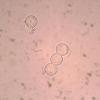
30-12-2025 16:44
Pascal DucosBonjour,Une anamorphe rose stipitée, très nombre

30-12-2025 16:41
Pascal DucosBonjour,Une anamorphe rose stipitée, très nombre

30-12-2025 16:41
Pascal DucosBonjour,Une anamorphe rose stipitée, très nombre

30-12-2025 09:04
Hello.A Pyrenomycete sprouting sparsely but very d

29-12-2025 17:44
Isabelle CharissouBonjour,J'aimerais savoir si d'autres personnes au

12-11-2021 00:03
Lepista ZacariasHi everybody,A week ago in my fiels trip I noticed

29-12-2025 17:12
 Bernard CLESSE
Bernard CLESSE
Bonjour à toutes et tous,Pourriez-vous m'aider à
This is shown as extinct in the UK so can anyone help?
Thanks
Malcolm
I have recieved a sample of the same today, from Yorkshire. Where were yours collected from?
I have slightly larger spores 11.5 -12 µm
I'm sure it's P.vulgaris, and was about to send a specimen to Chris Yeates.
Cheers,
Nick
So you were the person "down south" who was also going to look at it. Yes it is from Yorkshire. I was so excited at the possibility of it being Pithya that I put it on here asap and I have since looked at the spores in more detail from a "drop" and yes the average is towards 12 µm?.
Mal
Yes that sounds like me -So we're both looking at the same collection!
Cheers,
Nick

It looks like Pithya vulgaris but the spore size is a bit smaller than my own collections (13-16 µm Ø). Maybe your collection is not enough mature.
The habitat on dead branches of Abies (probably also on Picea abies) is typical.
After seing your comments I selected one of the more mature specimens for a spore drop and the spores were a little bigger. (The second symmetrical? group of spores) and they ranged from 12.3 - 13.1 µm?. With a search of lots more the largest I could find was 14 µm?
Mal

.. yes, the substrate does not look like Picea but like Abies.
I am livng in an area with natural Abies-stands. Since decades I am looking for Pithya vulgaris but never found it (and not in the Alps, the Black Forest, the BAvarian Forest, Croatia, ...).
A friend of mine (B. Fellmann) told me about a collection of P. vulgaris on an Abies log that was used as a Christmas tree and thrown away.
What, Mal, are the circumstances of your find?
Best regards from Lothar

Chris
Yes these were first found in an area used as a dump for discarded Chrismas trees. It has since been found on various local trees including Pseudotsuga menziesii so it has obviously found a new home.
Mal

thank you very much for the information. It seems to be hopeful to look at similar places.
My friends, Heinz Holzer and Bernd Fellmann, have observed the species near Munich (Germany) on a thrown-away Christmas tree in a city-near forest. This was published in Mycologia Bavarica 8 (only picture on top) and 10 (paper by Dieter Benkert). Unfortunately, in this paper it wasn`t mentioned that the find was done on a Christmas tree (and not a lot at all about ecology ...)
Best regards,
Lothar
Here it also seems to have jumped to even more exotic conifers a couple of times (but in places with lots of infected Abies).
Do any of you know about phylogentic studies looking at juniperina as well?
cheers
stimmt, expressis verbis war der Weihnachtsbaum nicht erwähnt, aber immerhin heißt es dort (Bd. 8, Innendeckel vorne): "an Zweigen einer im Wald entsorgten Ziertanne". Das ist eine bekenntnisneutrale Interpretation, die z. B. auch eine entsorgte Gartentanne ohne Lametta nicht ausschließt ... ;-)
Gruß, Till

Hallo Till,
entweder war es Heinz oder es war Bernd, der zu mir von einem Weihnachtsbaum sprach. Aber Du hast natürlich recht: die Herren waren nicht dabei, als der Baum mit Lametta behängt wurde - oder auch nicht :-)
Herzliche Grüße von Lothar



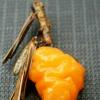
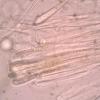
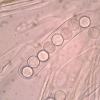
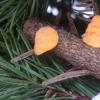
 File789-0001.jpg
File789-0001.jpg